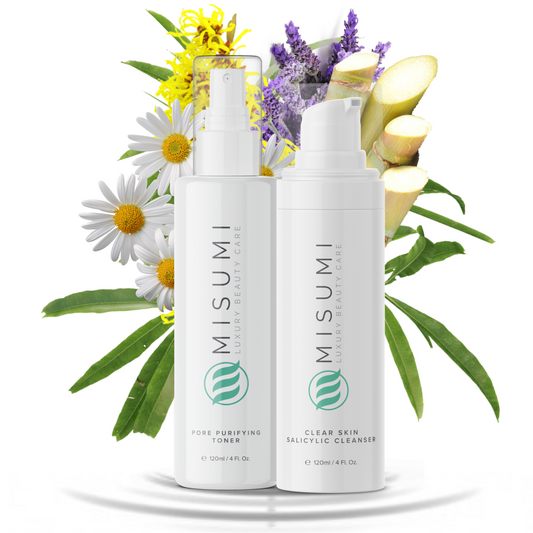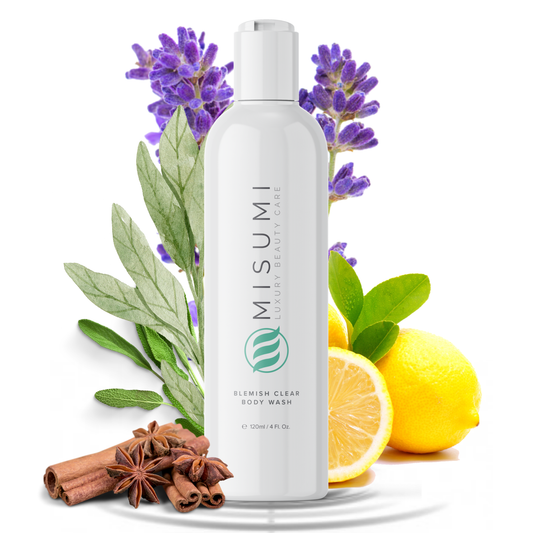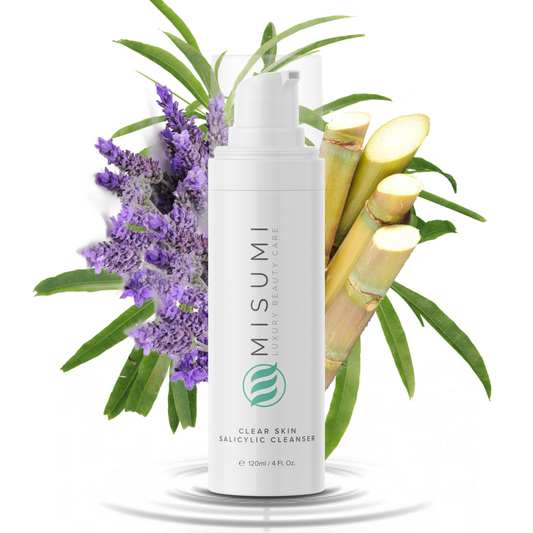All of us have tried to find a pattern in our breakouts at one point or another. Anyone who has ever suffered from acne vulgaris will tell you it's unpredictable. Acne seems to strike when we least want it to – during our period, before an important event, or while we're on vacation. But is there an actual correlation between all its symptoms?
The practice of examining the location of acne on our bodies is often referred to as "face mapping." There are many different versions of this, and some will tell you completely different things than the rest.
So, where does the idea of face mapping come from? It dates back thousands of years and is an integral part of traditional Chinese medicine. The Chinese invented the initial patterns, which have remained the same since then, and other people have tried adding or omitting a couple of things. This is why nowadays, there are quite a few different versions of the initial acne face map.

The main idea behind an acne face map states that by examining the location of your breakouts, you can discover underlying health problems in your body. Basically, they believed that the outward appearance and location of acne could tell a lot about the person suffering from it and the main reason why.
Of course, this doesn't mean that acne can't appear randomly. If you're suffering from severe acne located all over your face and body, chances are that face mapping might not help. If that's the case, your best bet is to see a dermatologist who will put you on serious oral acne medication and a carefully designed topical treatment plan.
Now that we've established the main idea behind face mapping, let's explore what each location on our face and body says about the underlying cause.
Acne Around the Hairline

Since this is a peculiar place, not many people will experience this type of acne. The most common reason why hairline acne appears is due to the hair products we use. From dry shampoo to conditioner, many ingredients in hair care, such as pomades, don't agree with our skin.
If you notice that you're getting acne around your hairline, examine the hair products you use by reading the ingredient list. You could try switching to a more natural hair care brand that uses simpler ingredients and is declared non-comedogenic. Or you could try scrubbing your face thoroughly after washing your hair.
Forehead Acne
Similarly to acne around the hairline, forehead acne can also be caused by your hair care regimen. According to traditional face mapping, other common reasons for acne in the forehead area are stress and digestive issues.

If acne occurs on your forehead, make slight changes to your diet and lifestyle. Incorporate more whole foods, get seven hours of sleep each night, and make sure you're drinking plenty of water. This will keep your blood sugar down and help your body detox itself naturally.
Make sure to keep your hair off your face, and if you have bangs, wash them regularly with natural hair care products so they won't clog your hair follicles.
Cheek Acne
There are a few things you need to know when it comes to cheek acne. If your acne breakouts are located at the top of the cheeks, it could be due to problems with your respiratory system. This includes all kinds of issues: living in a polluted city, having physical breathing problems, or not getting enough fresh oxygen. The dust around your house can also cause respiratory issues. To help with this, you can purchase an air purifier for your house and office.

Makeup lovers will know that the cheeks are the prime spot for applying a highlighter. But unfortunately, your highlighter product could be causing acne. If you break out after using it, we recommend switching to a different brand.
Keeping your makeup brushes clean is also crucial. Bacteria, dust, and dirt can get on your brushes and clog pores. Wash them at least once a week using lukewarm water and baby shampoo.
Make sure to clean the items your face comes into contact with often, such as pillowcases and your cell phone.
If the acne is located on your lower cheeks, it might indicate you're experiencing issues with dental health or you have a lack of dental hygiene. If you suspect this might be the case, visit your dentist.
Cheek acne could also mean that the breakouts are not related to anything specific. It might just be occurring due to excess bacteria, sebum, and clogged pores.
Acne on Your T-Zone
The area between your eyebrows and down your nose is commonly referred to as the T-zone. If you're noticing stubborn acne around this area, it means your digestion is out of balance. You also may have a food allergy. Reducing the amount of processed food and dairy should help if this is the case.
Furthermore, acne on the nose has been linked to liver issues, so you might want to avoid drinking excessive amounts of alcohol or eating foods that are spicy, as this can lead to more acne breakouts.
Acne on the T-zone could also indicate excess sebum production, in which case you might want to try topical Retin A products or, if your acne is severe, Accutane. Try this Retinol Intense Repair PM Creme.
Make sure you have a proper skincare routine, or try over-the-counter products to keep those nasty breakouts to a minimum. We recommend products that include salicylic acid and benzoyl peroxide.
Acne on Your Chin and Jawline

ocrine system. High amounts of androgen hormones can result in an overproduction of sebum, which is a major concern when it comes to hormonal acne.
Women have probably noticed a pattern between chin breakouts and their menstrual cycle. As you might have guessed, chin and jawline acne are linked to irregular hormone levels. It's normal for women to have a few breakouts during that time of the month. But if it's ongoing or if you're experiencing excessive acne, you might be suffering from a hormonal imbalance or an underlying medical issue (such as polycystic ovary syndrome) that needs immediate attention.
Birth control pills can also cause hormonal changes and disruptions. Some claim that taking birth control has made their periods more regular and balanced their hormones. However, you will probably continue to break out once you go off birth control pills and the artificial hormones are gone. This is because they function as a mask for the symptoms of an underlying disease or medical problem, which should be the focus of your treatment. This is not to say that birth control pills can't be useful, but you should always do your research and consult with a dermatologist prior to starting any medication.
For hormonal problems, doctors recommend a shift to a healthier diet that keeps processed food to a minimum and regulates your sleep schedule. Controlling your stress levels is also crucial since high amounts of cortisol – the stress hormone - can cause havoc on your skin.
If you're experiencing chin and jawline acne for a longer period of time, it would be wise to visit both a dermatologist and a gynecologist. They will likely prescribe oral medication like spironolactone, which will work wonders on your skin in conjunction with topical treatments.

Try eliminating or decreasing the number of dairy products you consume. Dairy is notorious for disrupting the hormones which are already in our bodies. Many people claim that switching to plant-based milk, such as almond milk, has eliminated their hormonal acne to a great extent.
Body Acne (Neck, Back, Arms)
What causes body acne isn't that different from what causes facial acne. Unregulated hormones, excessive oil production, genetics, and contact with bacteria are the most common causes of body acne. Sweat, as well as dodgy fabrics that don't agree with the skin, could also cause acne to appear.
To help with body acne, wear loosely fitted clothes, choose cotton over other fabrics, avoid shower gels and body lotions which contain comedogenic ingredients that clog pores, use natural laundry detergents, and shower right after you sweat.
It's important to note that serious skin conditions such as rosacea or allergic reactions are sometimes mistaken for body acne. If you're suspicious about the appearance of acne, it's best to visit a dermatologist.
What Does Your Acne Type Tell You?

Now we've covered the location of your breakouts, let's go through the pimple types.
Painful and Inflamed Red Cysts
These types of pimples are painful and large. They could either be due to a particular hormonal issue or a sign that your liver or lymphatic system has some problems. Spot treatments can work on some cysts, but it's best to consult a dermatologist.
Blackheads, Papules, and Whiteheads
These can appear anywhere on the face, and they usually indicate excessive oil production, an excess of dead skin cells, and acne-causing bacteria - all things which lead to clogged pores.
Since papules are slightly less severe than cystic acne, they will usually go away on their own. You could try using topical creams, DIY at-home spot treatments, Retin A products, or face washes that contain benzoyl peroxide. If you're an avid makeup user, switch to natural or non-comedogenic brands, as these are less likely to cause acne.
Pimples That Resemble a Rash
Combined with a change in skin tone, these small, rash-like pimples could be a symptom of Candida. It could also indicate another rash or a problem with your digestive system, so it's best to visit a doctor.
Breakouts During Puberty

Pimples during puberty are completely normal. With all the hormones floating around our bodies, the oil glands produce excess oil, which leads to acne-prone skin and breakouts. We've all been there, and while it's certainly not the most exciting period of our lives, the good news is that these usually go away on their own.
However, you could speed up the healing process by investing in good quality skin care products such as this Complete Clear 3-Step System and making a few lifestyle changes like incorporating more exercise in your daily routine and eating more fruits and vegetables.
Inflamed Skin and Redness
If your acne comes with inflammation and redness, it could mean you're experiencing body inflammation or hormonal issues. This can be solved by including more antioxidant-rich food in your diet, exercising, and avoiding toxins.
Small Bumps Under your Skin
These are usually a sign of a problem with the lymphatic system or excessive free radicals in your body.
What Does the Time of Day You Break Out Indicate?

If you notice pimples on your skin as soon as you wake up, it could mean that you have eaten something the previous night that has caused you to break out. It could also result from forgetting to wash your face the night before or sleeping with your makeup on. Some people claim that eating right before you fall asleep could lead to breakouts, but there isn't enough scientific data to support this claim.
Breakouts that occur all of a sudden during the afternoon are usually a result of hormonal fluctuations or a sign that the makeup you're using (if any) is causing flare-ups. It's important to remember that not all skincare products are created equal. Moisturizers are sometimes to blame for afternoon pimples, so try experimenting with a different one if you're suffering from these. Certain ingredients, such as mica, mineral oil, alcohols, dimethicone, beeswax, and lauric acid, should be avoided.
If you're breaking out in the evening, it might be because of the makeup you wear. Environmental factors, such as pollution, can also clog pores. Whatever the case might be, make sure you follow up with a good night time skin care routine to treat acne and keep those pesky pimples at bay.
Final Thoughts

Remember to take this information with a grain of salt. Mind mapping is a fun way to identify the root cause of your acne, but it's certainly not always accurate. It might be helpful for some people, while it could be a complete waste of time for others.
The modern version of this ancient practice relies heavily on scientific facts. This means we should be able to see more accurate versions of acne face mapping as time goes by.
A lot of factors influence acne, from excess oil production and hormones to having larger pores. If you suffer from severe acne that won't go away, visit a dermatologist. They will suggest quicker treatment options that provide long-lasting results.
References
A review of diagnosis and treatment of acne in adult female patients









